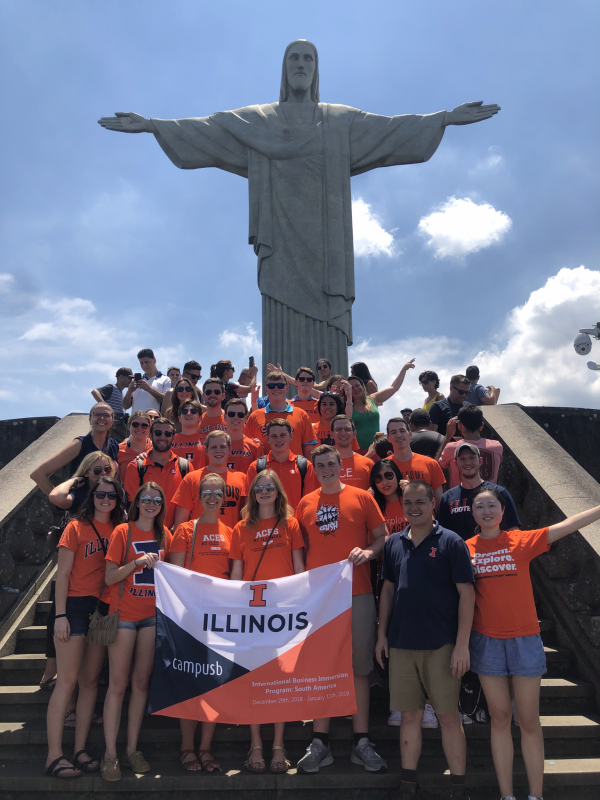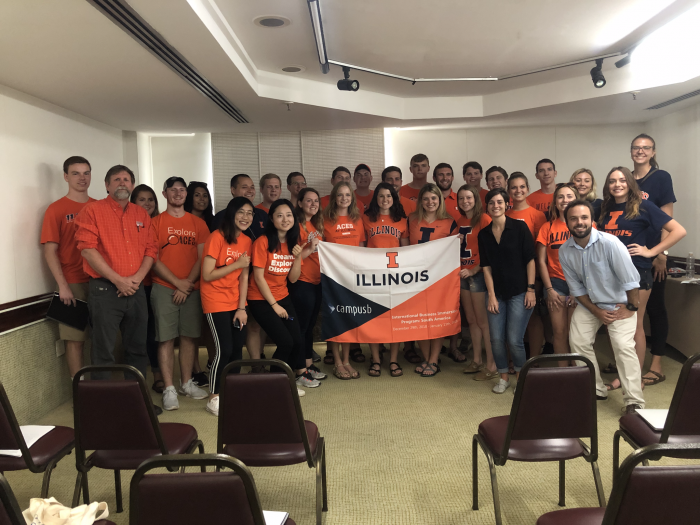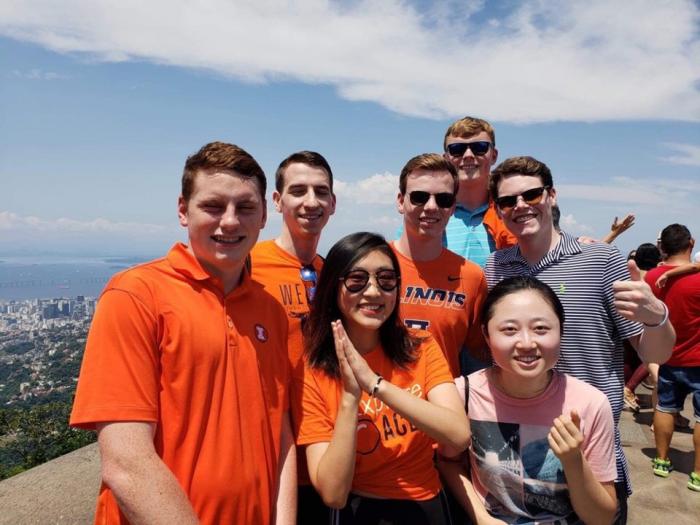Keep it “Rio”

Today was the last day of our trip in Brazil and we spent it in Rio de Janeiro. Our day in Rio consisted of our last company presentation, a trip to Christ the Redeemer, free time in the afternoon, and our farewell dinner.
In the morning, an agricultural consulting company called Agrosuisse came to our hotel and gave a presentation on how they provide consulting throughout the sustainable agriculture chain. Agrosuisse was founded in 1982 in Sao Paulo by two Swiss men and has since formed a large network across Brazil and the globe. They work with researchers such as EMBRAPA and work with universities across Brazil. Their customers include everyone from small organic farmers to the UN. The two representatives from the company were Eduardo, an agronomist consultant, and Luciana, an agricultural engineer. Eduardo talked about the history of their company, the composition of their teams, and highlighted some of the work that he does for Agrosuisse. Luciana, who also serves as a manager for the company, then talked about the services Agrosuisse provides for their customers, and went into more detail about some projects that they have worked on over the years. According to Luciana, their company mainly focuses on rural development, organic farms, and sustainable farming. Their current customers are heavily involved in organic farming, as the trend of organic is starting to become more popular in Brazil. Another trend they have been seeing is that more farmers are switching their land from cattle production to agriculture production. This is due to higher profit margins for production agriculture and decreasing profit margins for cattle production. Thanks to the comprehensive examples that the presenters provided, we were able to gain a better understanding of the current political situation, environmental conditions, and the latest trends in Brazilian agriculture.
Shortly after the lecture, students got together to explore the neighborhood around our hotel. We were able to shop for souvenirs and find a quick bite to eat before we headed to Christ the Redeemer. Christ the Redeemer is one of the new Seven Wonders of the World and stands tall over Rio. Christ is 30 meters in width and height and is made of reinforced concrete and soapstone. During our drive to Christ the Redeemer, we learned about the history of the sculpture and how it is connected to the history of Rio. Our tour guide was born in a favela in Rio and was able to provide many interesting details along the ride. The train system that transports visitors to the top of the mountain was built in 1884 and the pieces of Christ were brought up the mountain by rail. Our guide talked about the significance of the statue and the political and religious issues in Brazil and Rio that were present during and, ultimately, shaped the construction of Christ the Redeemer. Rio was still the capital of Brazil at the time. After taking the train up to Christ, we were able to see breathtaking views of Rio. From the observation platform, we could see the beautiful coastline of Rio, athletic stadiums from the 2016 Olympic Games, and the drastic difference in standard of living in Rio. After visiting Christ the Redeemer, we got a couple of free hours in Rio. Many of us decided to enjoy the beautiful 90-degree weather and head to the beach. At Copacabana Beach, we were able to relax and spend some more quality time together before our farewell dinner. At our farewell dinner, we enjoyed delicious food and thanked our guides Georgia and Talita for their kindness and for showing us around their beautiful country. Dana and Dean Hauser handed out superlatives for each person on our trip, and we were able to enjoy one final meal where we reflected on the new friendships, knowledge, and experiences we gained over the last two weeks in this beautiful country. Ciao Brazil!

